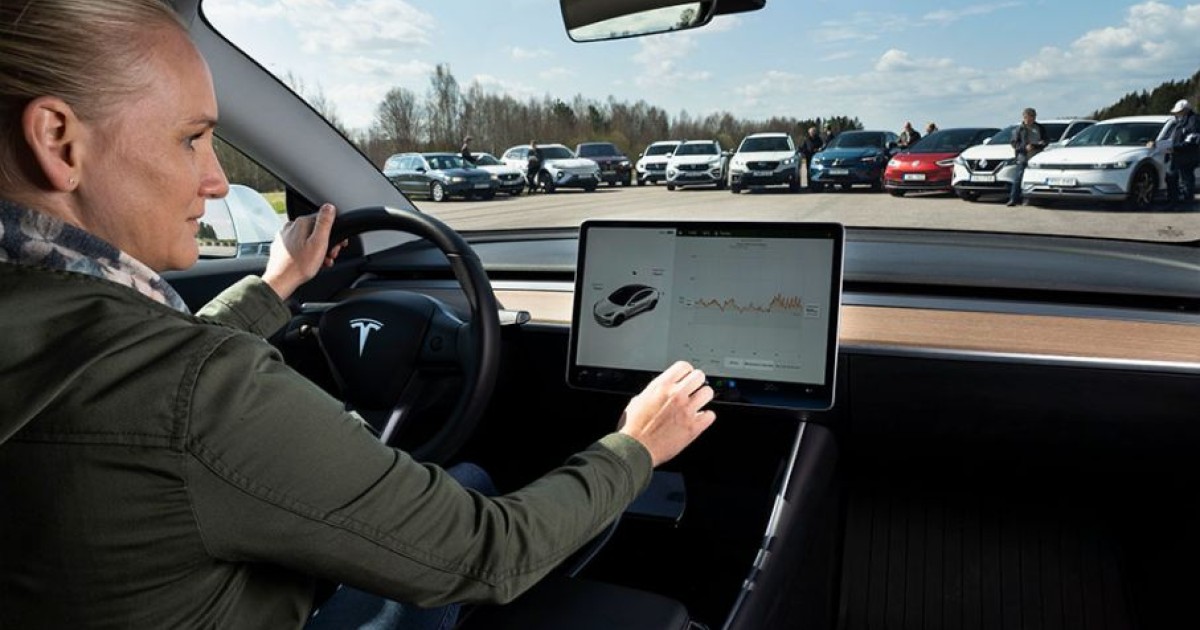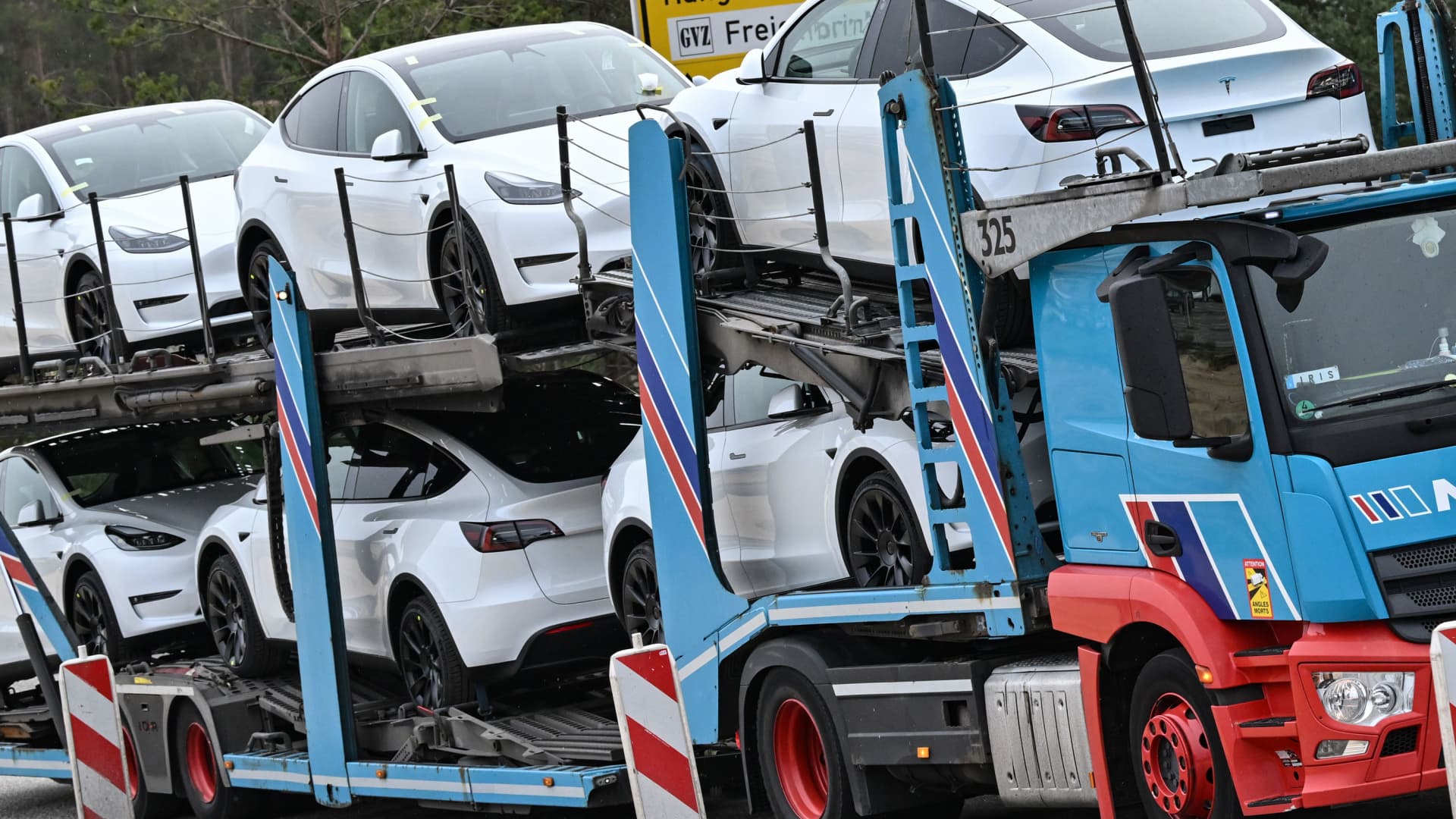- 1. Free VPNs Pay with Privacy
- 2. FinOps Moving to Hyperclouds
- 3. Unassailable Computing Enthusiasts
- 4. Lucas Kostka - the need for protection against deep fake
- 5. Folklore.org The Original Macintosh
- 6. GPTZero AI Plagiarism App
- 7. Affordable Microsecond Time Syncing
- 8. AI Tech's Future Potential
- 9. Touchscreens Outperformed by Buttons
- 10. Tesla Delivery Trouble or Opportunity?
Free VPNs Pay with Privacy
Most free VPNs are not truly free, requiring you to pay with your data. Using a VPN is a great way to protect your privacy and security online, as it encrypts the data from your device and changes your IP address. Free VPNs often need more essential features, cap your bandwidth or monthly traffic, or are scams. It is important to understand how a service makes money before signing up. Many free VPNs make money through advertising, meaning they may share your data with ad providers. Proton VPN is an exception to this rule.Added to Financial News lists by @zdavidson
Free VPNs Pay with Privacy
Find out how free VPNs make money: With most “free” VPNs you pay with your privacy or security, and the cost can be high.
FinOps Moving to Hyperclouds
"Enclose phrases in quotes" - This means that when searching for something, it is important to use quotation marks around the phrase. "Use a + to require a term in results" - This means that when searching, you should use the plus sign before a term to require the term to appear in the results."Use - to exclude terms" - This means that when searching, you should use the minus sign before a term to exclude the term from the results. "Example: +water -Europe" - This means that when searching, if you want to search for the term 'water' and exclude the term 'Europe,' you should type "+water -Europe" into the search engine.Added to Financial News lists by @jmayers
FinOps Moving to Hyperclouds
Most businesses started being disrupted by the clouds years ago. Entertainment? Cloud-based streaming changed everything. Telecoms? 5G runs on OpenStack clouds. Office work? | For years, financial software has lived in data centers and priv...
Unassailable Computing Enthusiasts
Starting in 1996, Alexa Internet has donated its crawl data to the Internet Archive. Flowing in every day, these data are added to the Wayback Machine after an embargo period. The majority of today's processors can't rightfully be called completely RISC or completely CISC. The two textbook architectures have evolved towards each other to such an extent that there's no longer a clear distinction between their respective approaches to increase performance and efficiency. Chips that implement the x86 CISC ISA have become a lot like chips that implement various RISC ISAs; the instruction set architecture is the same, but under the hood, it's a different ball game.The same goes for today's so-called RISC CPUs; they've added more instructions and complexity to the point where they're every bit as complex as their CISC counterparts. The "RISC vs. CISC" debate exists only in the minds of marketing departments and platform advocates whose purpose in creating and perpetuating this fictitious conflict is to promote their pet product using name-calling and sloganeering. David Ditzel, the chief architect of Sun's SPARC family and CEO of Transmeta, said that with RISC, they have large design teams and long design cycles, and the performance story is less clear as die sizes are no longer small.Superscalar and out-of-order execution are the biggest problem areas that have impeded performance leaps. Ditzel mentioned that the MIPS R10,000 and HP PA-8000 seem much more complex than today's standard CISC architecture, the Pentium II. This has resulted in the current crop of complex RISC chips, prompting the question of where the advantage of RISC lies if the chips aren't as simple anymore. This has welcomed the post-RISC era.Added to Tech History lists by @slopez9
Unassailable Computing Enthusiasts
Lucas Kostka - the need for protection against deep fake
You woke up feeling fresh and ready to take on the day. When you checked your phone, you were surprised to see hundreds of unread notifications. There was a constant buzzing sound from your phone, and the messages list kept getting longer. You opened Twitter and saw hundreds of infuriated DMs. You noticed a video on your activity feed that caught your attention. It was of a popular YouTuber commenting on a deeply racist attitude of someone. To your surprise, it was you. This is not a reality yet, but it could be shortly. It is easy for anyone to create a deep fake video, and it costs less than a stamp. There are solutions to help detect deep fakes, such as manual detection by humans and automated detection by algorithms.Added to Tech History lists by @rsmith
Lucas Kostka - the need for protection against deep fake
Folklore.org The Original Macintosh
Apple's origins can be traced back to its founders, Steve Jobs and Steve Wozniak. Both had a strong vision of what they wanted to create and the ability to bring their ideas to life. Their personality and drive made Apple the powerhouse it is today. The Apple II was the company's first successful product and helped to define the personal computer market. This machine was designed to be accessible to many users, with an intuitive interface and powerful hardware. It was also the first computer to use color graphics, making it a groundbreaking device at the time.Added to Tech History lists by @slopez9
Folklore.org The Original Macintosh
GPTZero AI Plagiarism App
Edward Tian, a computer science student at Princeton, built GPTZero, an app that can detect whether ChatGPT wrote an essay - a form of AI plagiarism - by scoring the text on its "perplexity and burstiness." The Guardian recently reported that ChatGPT is introducing its system to combat plagiarism by making it easier to identify and watermark the bot's output. Insider's Beatrice Nolan also tested ChatGPT to write cover letters for job applications, with mixed results. The app was so popular that it crashed "due to unexpectedly high web traffic." Tian plans to publish a paper with accurate stats using student journalism articles as data alongside Princeton's Natural Language Processing group. Access your favorite topics in a personalized feed while you're on the go by downloading the app. Sign up for our newsletter to stay updated on the latest tech news and scoops - delivered daily to your inbox.Added to Tech Innovation lists by @smccormack
GPTZero AI Plagiarism App
GPTZero was created by Edward Tian, a Princeton student, who says he was inspired by increasing AI plagiarism. The app's popularity crashed his site.
Affordable Microsecond Time Syncing
A cheaper option to achieve +/- 10 milliseconds accuracy for synchronizing devices on a local area network (LAN) has been successfully tested. By adding a u-blox USB GPS module to NTP as a driver or chrony (timekeeping daemon) using GPSd shared memory, a reference clock can be set up with accuracy within +/- 10 milliseconds. The GT-U7 USB GPS device is good enough for this purpose and is usually less than $15. This post provides instructions on how to set up the USB GPS as a Stratum 1 NTP time server. This tutorial is for Linux and uses Ubuntu's Aptitude (apt) package management. It is possible to configure a reference clock in the default configuration and add servers. The output of the configuration file will look similar to the provided screenshot.Added to Tech Solutions lists by @phogan
Affordable Microsecond Time Syncing

For around $100, you can have a Stratum 1 NTP PPS GPS system providing microsecond time to all of your computers & equipment.
AI Tech's Future Potential
ChatGPT, a new AI-powered chatbot, has been gaining attention in Silicon Valley for its ability to produce haikus, crack jokes in Italian, and generate essays. OpenAI, the research organization behind ChatGPT, is expecting a surge in its business, with an estimated $200 million in revenue next year and $1 billion by 2024. Reports of OpenAI's forecast have sparked speculation on how the organization will profit from its technology. OpenAI has already been valued at $20 billion in a secondary share sale. It charges developers licensing its technology a penny or more to generate 20,000 words of text and two cents to create an image from a written prompt. OpenAI's mission is to advance AI for humanity safely, and it has already been used by Fortune 500 companies for video generation and AI copywriting. It has also been noticed as a potential Google search competitor, with ChatGPT answering queries for over one million users. Microsoft, which has provided OpenAI with capital and computing power, has benefited from the organization. However, investors have expressed skepticism.Added to Financial News lists by @asmith
AI Tech's Future Potential
/cloudfront-us-east-2.images.arcpublishing.com/reuters/QR3AW4KUIRIV5GKZC7Q2JDTF7Y.jpg)
The forecast represents how some are betting the AI tech will go far beyond splashy and sometimes flawed public demos.
Touchscreens Outperformed by Buttons
Modern cars are increasingly ditching physical buttons and switches in favor of touchscreens, which perform far worse, according to a test conducted by Vi Bilägare. This test revealed that the driver in the worst-performing car needed four times longer to perform simple tasks than the best-performing car. Designers are drawn to this new trend of a "clean" interior with minimal switchgear. At the same time, the financial department is attracted to the cost savings of using one digital screen, which can be updated over time. Vi Bilägare tested twelve cars at an airfield while driving at 110 km/h, along with an older Volvo V70, to compare the time needed for a driver to perform different simple tasks such as changing the radio station or adjusting the climate control. Although not the first to introduce a touchscreen, Tesla has always offered bigger screens than most manufacturers, containing more of the car's features, including the windshield wipers.Added to Tech Solutions lists by @cheatsheets
Touchscreens Outperformed by Buttons

Physical buttons are increasingly rare in modern cars. Most manufacturers are switching to touchscreens – which perform far worse in a test carried out by Vi Bilägare. The driver in the worst-performing car needs four times longer to perfor...
Tesla Delivery Trouble or Opportunity?
Shares of Tesla closed down 12% on Tuesday after the electric automaker reported fourth-quarter vehicle production and delivery numbers for 2022 that fell short of analysts' expectations and the company's stated goals. Tesla said 405,278 deliveries for the quarter and 1.31 million total deliveries for the year. This marked a record for the Elon Musk-led automaker and a growth of 40% in deliveries compared to 2021. However, according to a consensus of analysts' estimates compiled by FactSet, Wall Street was expecting Tesla to report around 427,000 deliveries for the quarter. CEO Musk blamed Tesla's declining share price on rising interest rates and his rocky $44 billion Twitter takeover, during which he sold tens of billions of dollars of his Tesla shares. Some Wall Street analysts think that Tesla's delivery miss, which followed aggressive discounting by Tesla in China and the US, spells trouble for the electric vehicle maker, while others see a buying opportunity. Toni Sacconaghi at Bernstein sees Tesla "facing a significant demand problem" in 2023, noting that no Tesla models appear to currently qualify for any Inflation Reduction Act rebates except the 7-seat version of the company's Model Y.Added to Financial News lists by @asmith
Tesla Delivery Trouble or Opportunity?

Some Wall Street analysts think Tesla's delivery numbers spell trouble for the electric vehicle maker. Others see a buying opportunity for the company in 2023.